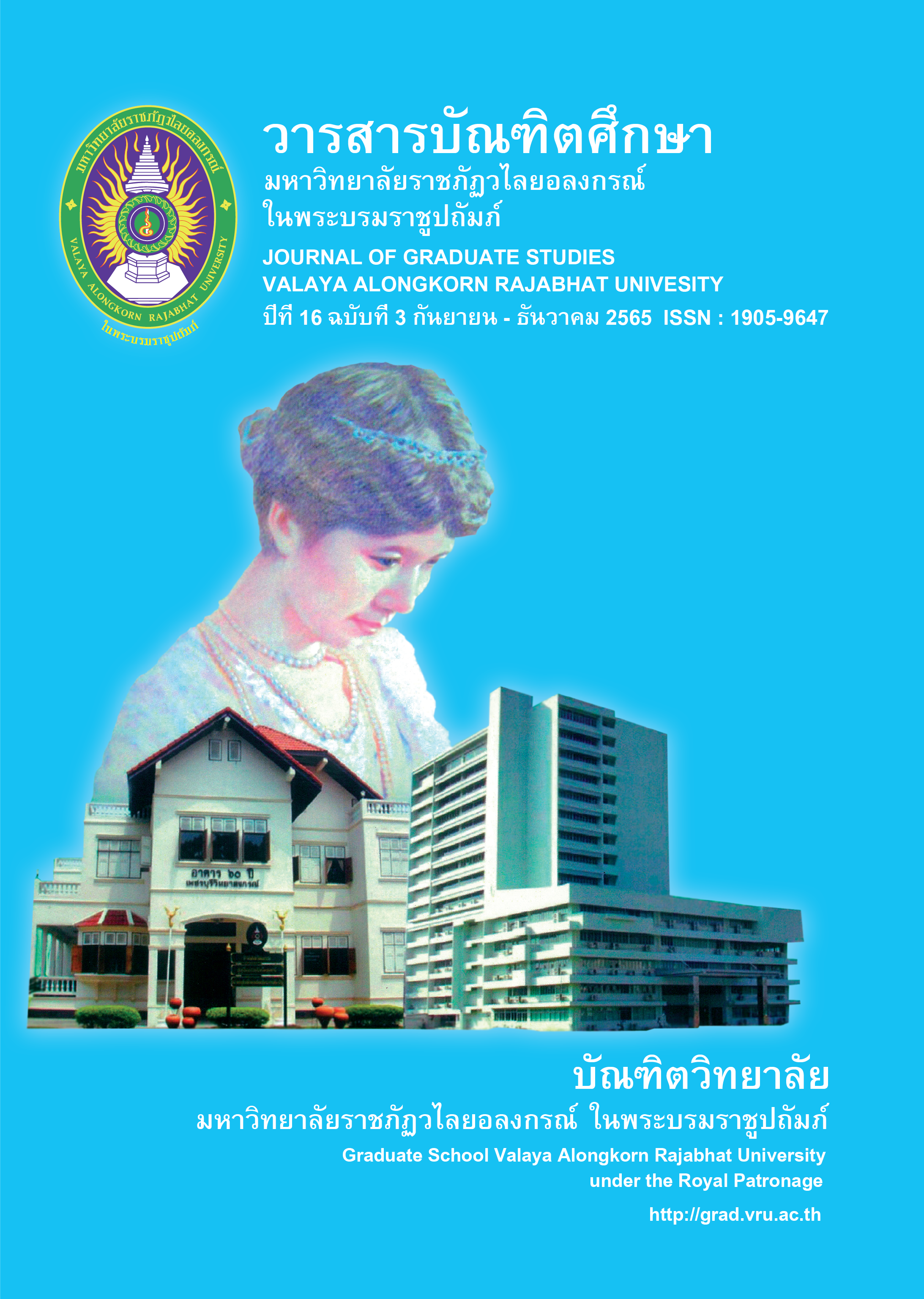THE STUDY OF NHAE ANE LHO BONG RITE IDENTITY, MORGAN LIFESTYLE, TO CREATE THE PROJECT THROUGH THE PERFORMANCE ASPECT
Main Article Content
Abstract
The creative study aimed for 1) educating the lifestyle and identity of Nhae Ane Lho Bong in the spirit pillar celebrating ceremony of Mogan’s ancesters who lived at South Surin islands, Ko Phra Thong sub-district, Kuraburi district, Phang Nga province, and 2) developing the model of creative performance regarding the lifestyle and identity of Nhae Ane Lho Bong in Phang Nga province, and 3) creating the identity of Nhae Ane Lho Bong in Phang Nga province. The sample used in the research were the society leader of Mogan people, teachers from Thai-Mogan society learning center and Public Health officers. The research tools were included the documents, academic papers, textbooks, journals and related researches including site-surveying, observation and interviews to analyze and design the procedure to create the creative performance then presented the work to experts and qualified committees for verifying and analyzing the content and qualitative information under from the evaluation which was applied by basic statistics such as Mean and Standard Deviation. The presentation was analyzing narration and through the performance.
The study found that 1) Mogan people lived under the nature rule, mainly depending on the sea. Their lives related to the ocean, wind, sky and temperature. They believed in ghost and their ancestor’s spirits. In every April, Chao Le people living on islands will group at South Surin islands and celebrate “Loy Reu” ceremony for worshipping ghosts and their ancestor’s spirits as well as blessing to be safe and expelling any jeopardies. The ceremony was included incarnation, prophecies, worshipping, playing music and dancing which was considered as letting the sorrow and unhealthiness go away from their lives and society. 2) According to the design and the creative Thai Dance performance which presented about the lifestyle and identity of Nhae Ane Lho Bong in Phang Nga province, the researcher obtained the concept from the Nhae Ane Lho Bong ceremony then analyzed and interpreted to show its value, the researcher analyzed through the design of creative performance according to the performance’s elements that included (1) the design of performing role,
(2) choreography, (3) audition for performers, (4) the design of sound and performing music, (5) the design of costumes, (6) the design of performing tools, (7) the design of lighting and (8) the design of stage. And 3) the performance was to present to the 6 qualified committee before publicizing process. So that, the identity of Nhae Ane Loh Bong was presented through the creative Thai Dance named Nhae Ane Lho Bong that had conformed to the performing elements. This was aimed to revive, preserve and carry on the tradition of Mogan people, the creative performance have transmitted the identity of Nhae Ane Loh Bong to be renowned and more interesting for other people.
Article Details

This work is licensed under a Creative Commons Attribution-NonCommercial-NoDerivatives 4.0 International License.
บทความทุกเรื่องได้รับการตรวจความถูกต้องทางวิชาการโดยผู้ทรงคุณวุฒิ ทรรศนะและข้อคิดเห็นในบทความ Journal of Global of Perspectives in Humanities and Social Sciences (J-GPHSS) มิใช่เป็นทรรศนะและความคิดของผู้จัดทำจึงมิใช่ความรับผิดชอบของบัณฑิตวิทยาลัย มหาวิทยาลัยราชภัฏวไลยอลงกรณ์ ในพระบรมราชูปถัมภ์ กองบรรณาธิการไม่สงวนสิทธิ์การคัดลอก แต่ให้อ้างอิงแหล่งที่มา
References
Arunothai, M., et al. (2006). Chee wit puak rao chao ta le urak lawoi siray island. Bangkok: Andaman Pilot Project, Social Research Institute, Chulalongkorn University.
Arunothai, M. (2010). Chee wit puak rao chao ta le ka moi aulang mogan kamee u rak la woi, we, the sea people. Bangkok: Andaman Pilot Project, Social Research Institute, Chulalongkorn University.
Chantanasaro, T. (2019, January 29). Interviewed by K. Tunthong. Bangkok: Faculty of Fine Arts, Srinakharinwirot University.
Deekham, N. (2019). Interviewed with Palach Buakaw et al. at the faculty of Fine Arts, Rajamangala University of Technology Thanyaburi.
Jivakanon, R. (2014). The art of costume design modern theater. Bangkok: Faculty of Arts, Chulalongkorn University.
Kongpan, P., et al. (2012). The crisis of the Chao Ley lifestyle. Tai Community Foundation.
Lamsakul, C. (2011). The art of choreography (Creative Thai Dance). Bangkok: Bangkok Business Press, Aor Copycenter.
Makpa, P. (2017). nāttasin sāngsan kap kān phœ̄iphrǣ ʻattalak thāng watthanatham chāo Thai phūan bān bung khē tambon nō̜ng sǣng ʻamphœ̄ pāk phlī čhangwat ืNakhō̜n Nāyok [Creative dancing arts and promotion of cultural identity of the Thai puan people in Ban Bung Khe, Nong Saeng sub-district, Pakplee district, Nakhon Nayok province]. Institute of Culture and Arts Journal Srinakharinwirot University. 19(1), 72-81.
Natayakun, S. (2008). Dance Kinesiology. Bangkok: Odeon Store.
Nimsamer, C. (2001). Composition of Art. 6th ed. Bangkok: Thai Wattana Panich Co., Ltd.
Saaisunthorn, K. P. (2005). Research and development of stateless children. Bangkok: Office of the Health Promotion Fund.
Sensai, P. (2003). Invention. Mahasarakham: Mahasarakham University.
Phuricha, W. (2005). Lighting for the stage. Bangkok: Chulalongkorn University Press.
Wanmahin, N. (2019, January 28). Interviewe by K. Tunthong. Bangkok: Variety Dance Co., Ltd.
Wirunrak, S. (2004). Periscope dance. Bangkok Printing, Chulalongkorn University Press.


